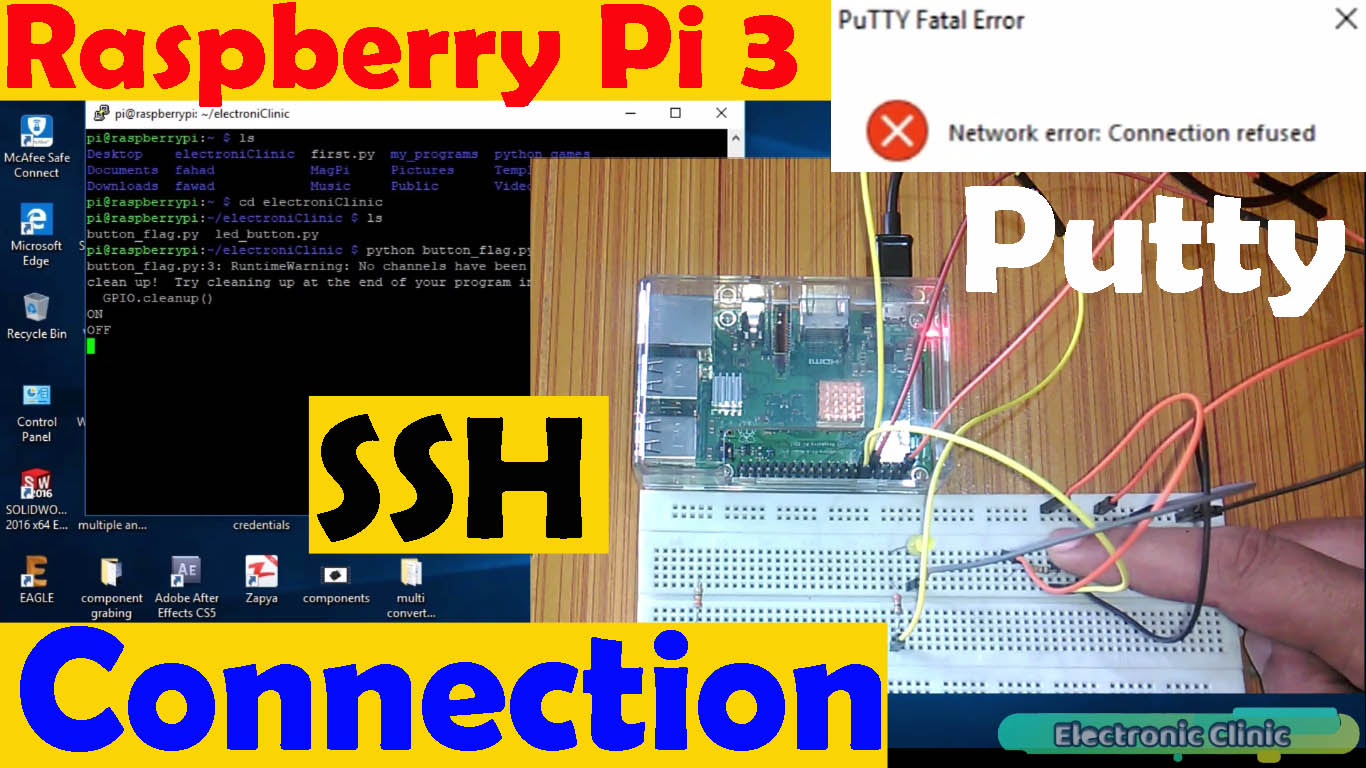Free Remote IoT Monitoring: SSH Raspberry Pi Guide
Is managing your burgeoning fleet of IoT devices starting to feel like herding cats? It's time to harness the power of remote IoT monitoring using SSH on a Raspberry Pi and the best part? You can do it for free.
In today's hyper-connected world, the proliferation of IoT devices is undeniable. From smart home appliances to sophisticated industrial sensors, these devices generate a wealth of data, offering unprecedented opportunities for optimization and automation. However, with this expansion comes the challenge of efficient management. Remote IoT monitoring has emerged as a critical solution, enabling users to supervise and control their devices from anywhere in the world.
For tech enthusiasts, hobbyists, and professional developers alike, mastering the art of setting up remote IoT monitoring using SSH on a Raspberry Pi is an invaluable skill. The Raspberry Pi, a low-cost, versatile single-board computer, serves as the perfect platform for this purpose. Coupled with Secure Shell (SSH), a secure remote access protocol, it transforms into a potent tool for IoT management.
- Frank Sinatra Ol Blue Eyes Legacy Rare Blue Eyes Facts
- Carly Jane Onlyfans Leak The Full Story What It Means
To better illustrate the practical application of these concepts, consider the following scenario:
Imagine a team of environmental scientists deploying a network of sensors to monitor air quality across a large geographical area. Each sensor node is equipped with a Raspberry Pi, collecting data on particulate matter, temperature, and humidity. Without remote monitoring capabilities, the team would need to physically visit each location to retrieve data and check the status of the devices. This is not only time-consuming and expensive but also impractical in remote or hazardous environments.
By implementing remote IoT monitoring using SSH, the scientists can remotely access each Raspberry Pi, download the collected data, diagnose any issues, and even update the sensor software. This drastically reduces the need for on-site visits, saving time, resources, and improving the overall efficiency of the monitoring program.
In essence, remote IoT monitoring allows you to supervise and manage IoT devices efficiently, no matter where they are located. It brings the control room to your fingertips, empowering you to make informed decisions and take proactive measures.
One often-overlooked aspect of Raspberry Pi-based IoT deployments is the health of the SD card. The SD card serves as the primary storage medium for the operating system, applications, and data. Monitoring its health and lifespan is crucial for ensuring the reliability and longevity of your IoT devices.
Remote IoT monitoring enables you to track key metrics such as disk space usage, read/write speeds, and error rates. By analyzing this data, you can detect potential problems early on and take preventive measures, such as replacing the SD card before it fails. This can save you from unexpected downtime and data loss.
Several free tools are available for monitoring SD card health on a Raspberry Pi. These tools typically provide a graphical interface or command-line utilities for accessing and analyzing SD card information. Integrating these tools into your remote monitoring setup can provide valuable insights into the health of your devices.
The RemoteIoT web SSH client offers a convenient way to access your IoT devices from anywhere via a standard web browser. This eliminates the need for installing SSH clients on your local computer or mobile device. Simply log in to the RemoteIoT portal, select your device, and launch the web SSH client.
The web SSH client provides a secure and interactive terminal session, allowing you to execute commands, transfer files, and manage your IoT devices remotely. It supports features such as tab completion, command history, and syntax highlighting, making it easy to navigate and work with the command line.
To access your IoT or Raspberry Pi device from a browser, follow these steps:
Download and install the RemoteIoT agent on your IoT device or Raspberry Pi device from the RemoteIoT portal. You will need to sign up and log in to get your authentication credentials.
Setting up a remote IoT VPC SSH Raspberry Pi system may seem daunting at first, but with the right guidance, it can be a straightforward process. A Virtual Private Cloud (VPC) provides a secure and isolated network environment for your IoT devices. SSH allows you to access these devices remotely through a secure tunnel.
SocketXP IoT Remote SSH Access solution offers a streamlined way to SSH into your IoT or Raspberry Pi fleet. It eliminates the need for complex network configurations and port forwarding rules. SocketXP creates a secure tunnel between your local computer and your IoT devices, allowing you to access them as if they were on the same network.
In essence, combined with Secure Shell (SSH), a protocol for secure remote access, the Raspberry Pi becomes an indispensable tool for IoT monitoring and management.
In this article, we will explore how to download, set up, and utilize SSH for remote IoT monitoring on a Raspberry Pi, ensuring you have the expertise and tools to succeed in this field.
- Vegamovies Is It Safe Legal Find Streaming Alternatives
- Hawk Tuah Girl Hailey Welchs Viral Fame Whats Next

Unlock The Power Of Free RemoteIoT Platform SSH Key Raspberry Pi For

Free Download SSH RemoteIoT Device Raspberry Pi For Windows The

RemoteIoT Platform SSH Key Free Access For Raspberry Pi The Ultimate Guide